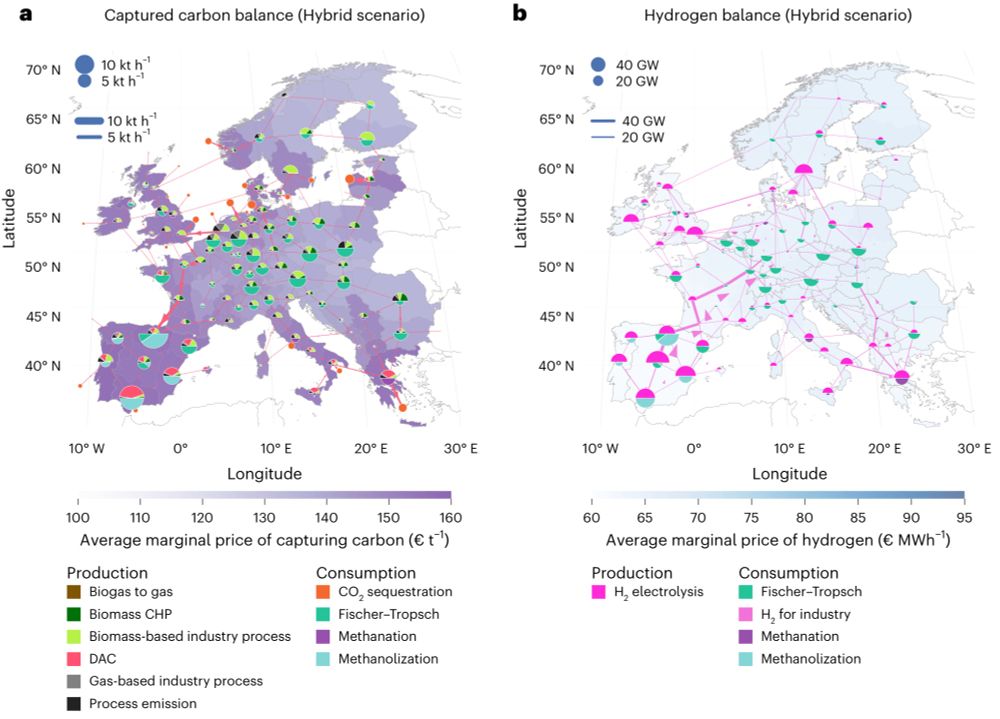Smaller size of the hydrogen network when green fuels and materials are imported at scale and ammonia- or steel-making can relocate within Europe.

Smaller size of the hydrogen network when green fuels and materials are imported at scale and ammonia- or steel-making can relocate within Europe.
Imports of derivative products like ammonia and methanol are preferred

Imports of derivative products like ammonia and methanol are preferred
System costs fall by 1–10 % across a ±20% import cost range
In this range, cost-effective import volumes range between 1000 and 2000 TWh (~30-60 Mt H₂-eq)
No cost savings beyond imports of 3000 TWh (~90 Mt H₂-eq)

System costs fall by 1–10 % across a ±20% import cost range
In this range, cost-effective import volumes range between 1000 and 2000 TWh (~30-60 Mt H₂-eq)
No cost savings beyond imports of 3000 TWh (~90 Mt H₂-eq)
A full sweep of scenarios, interpolating between complete self-sufficiency and wide-ranging imports, plus sensitivity tests on low vs. high import prices and on excluding specific vectors to map the cost-effective space.
What we learned:

A full sweep of scenarios, interpolating between complete self-sufficiency and wide-ranging imports, plus sensitivity tests on low vs. high import prices and on excluding specific vectors to map the cost-effective space.
What we learned:
busy gasping for air 🚵♂️🫁

busy gasping for air 🚵♂️🫁
Of course, this was made with #PyPSA 😉


Of course, this was made with #PyPSA 😉





📖 See our new study in @natureenergy.bsky.social on future carbon management: www.nature.com/articles/s41...

📖 See our new study in @natureenergy.bsky.social on future carbon management: www.nature.com/articles/s41...


On the supply side, wind energy variability is as the strongest factor - more than solar or hydro availability - but heat pump performance also plays a considerable role.

On the supply side, wind energy variability is as the strongest factor - more than solar or hydro availability - but heat pump performance also plays a considerable role.

But how can we ensure robust infrastructure planning in this case? What happens during rare events like the once-a-decade Dunkelflaute?
www.nature.com/articles/s41...

But how can we ensure robust infrastructure planning in this case? What happens during rare events like the once-a-decade Dunkelflaute?
www.nature.com/articles/s41...

